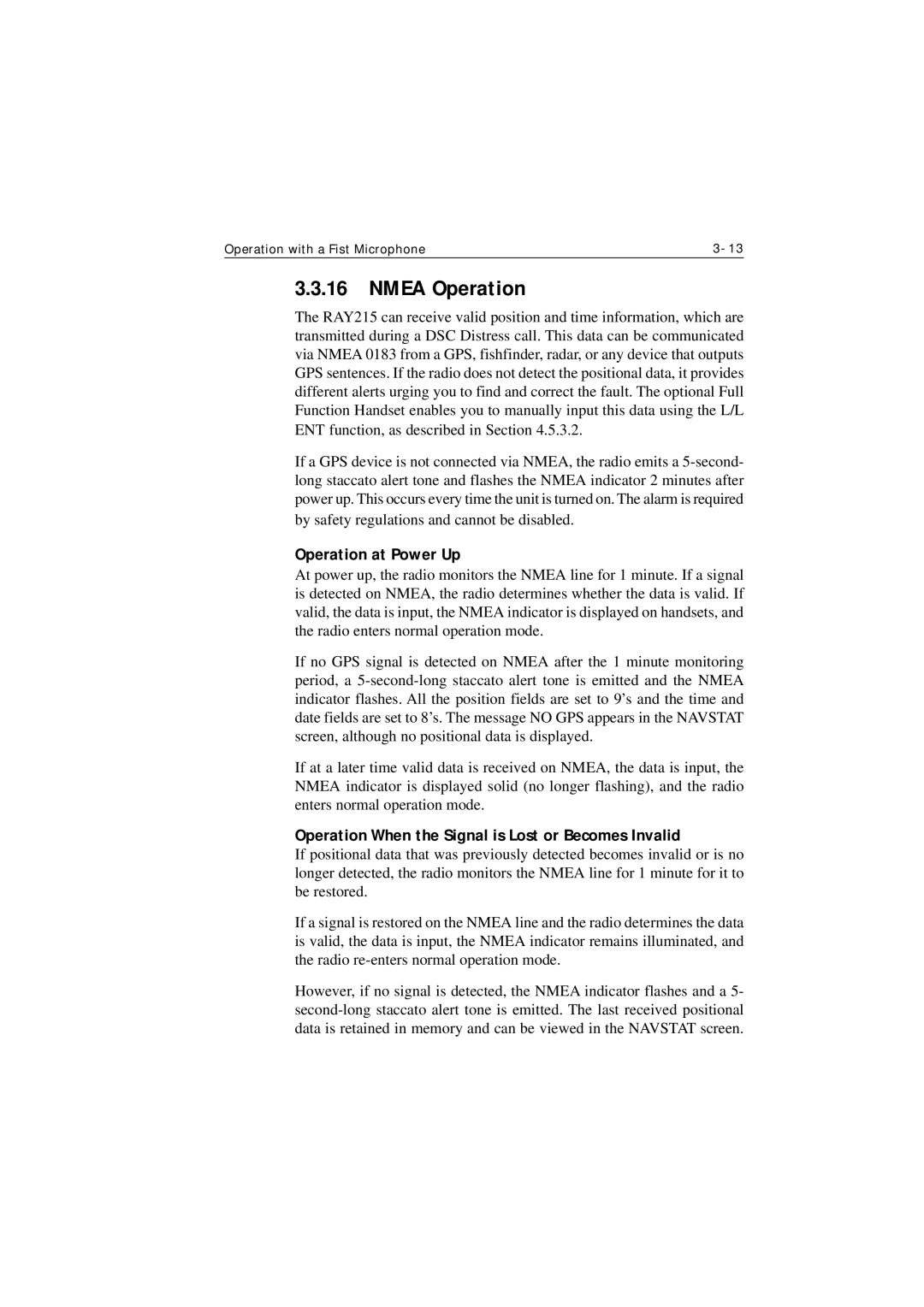Operation with a Fist Microphone |
3.3.16NMEA Operation
The RAY215 can receive valid position and time information, which are transmitted during a DSC Distress call. This data can be communicated via NMEA 0183 from a GPS, fishfinder, radar, or any device that outputs GPS sentences. If the radio does not detect the positional data, it provides different alerts urging you to find and correct the fault. The optional Full Function Handset enables you to manually input this data using the L/L ENT function, as described in Section 4.5.3.2.
If a GPS device is not connected via NMEA, the radio emits a
Operation at Power Up
At power up, the radio monitors the NMEA line for 1 minute. If a signal is detected on NMEA, the radio determines whether the data is valid. If valid, the data is input, the NMEA indicator is displayed on handsets, and the radio enters normal operation mode.
If no GPS signal is detected on NMEA after the 1 minute monitoring period, a
If at a later time valid data is received on NMEA, the data is input, the NMEA indicator is displayed solid (no longer flashing), and the radio enters normal operation mode.
Operation When the Signal is Lost or Becomes Invalid
If positional data that was previously detected becomes invalid or is no longer detected, the radio monitors the NMEA line for 1 minute for it to be restored.
If a signal is restored on the NMEA line and the radio determines the data is valid, the data is input, the NMEA indicator remains illuminated, and the radio
However, if no signal is detected, the NMEA indicator flashes and a 5-
